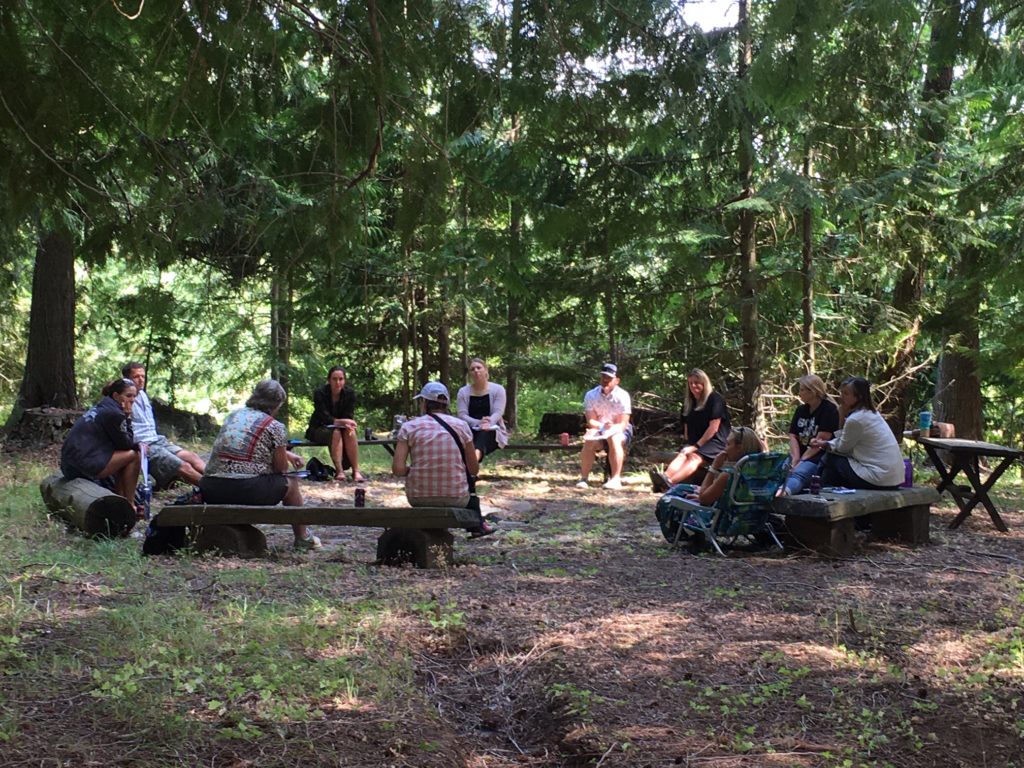Last month, we introduced to you a significant initiative PAFE has funded thanks to our donors. Most of our programs focus on the student. However, we learned from school leadership their desire to invest in professional learning communities for our teachers, allowing them to better serve their students. COVID only underscored that need. To that end, Professional Learning Communities (PLCs) has been a significant strategic initiative. Learn how it works here.
Learning to work better together
The bonus of job-embedded professional development (instead of going to a conference) is that teachers create it and lead it. They’re designing meaningful professional development for their buildings in real-time. And it’s hard to implement, but it’s how we are doing business, said Andra Murray, director of teacher and learning at LPOSD.
PLCs can’t feel like busywork. It has to be embedded and have to impact their work and how they think directly. Not only that, but this type of training is far more impactful. If one attends a conference here or there, there is about a 10 percent chance of returning and doing something with it. PLCs are different.
The success relies on the implementation. We spoke with Erik Olson, principal at Farmin Stidwell Elementary, Casey McLaughlin, principal at Sandpoint Middle School and Andra Murray to learn how they are doing it and how it impacts the students.
They start with collective commitments. These are beliefs the staff creates to shore up against challenges to the system. It helps everyone be aware of their emotional wake. We all have one but don’t think about it. It often takes someone else calling us out on it.
Teachers and administrators come to work each day from different backgrounds. Every one of them has something going on in their world. “As school leadership,” said Casey McLaughlin, “our job is to give them strategies so they can work together. When they can do that, we serve the students better.”
An example of one collective commitment: “We will build healthy relationships with our students, staff, and families that encourage open and honest dialogue that fosters the joy and curiosity of learning.”
Erik told us:
“In 2017, we developed seven collective commitments and they sat on a piece of paper. They sat there in 2018, 2019. This past year, I brought these back out. I read all seven of them out loud, and as I read them, I looked at my audience, my teachers, and everyone was smiling. And it just filled my bones with chills because we are finally looking at these collective commitments and we’re actually doing it.”
Here is how it plays out at Farmin Stidwell:
In our 5th grade PLC, we help each other meet the needs of our students. When one teacher struggles, the others are there to offer support. Together, we created scaled rubrics and developed assessments and lesson plans designed to increase student learning. While we saw student learning improve and celebrate the successes along the way, something was missing. We put our heads together and realized that it was not enough for students to become better readers through our instruction. We wanted them to LOVE reading. We wanted them to continue to read when they returned home for the summer. We wanted them to be life-long learners. After discussing and analyzing students, we built an instructional approach that honors the reading standards while promoting engagement. We launched a Roald Dahl books study. Students will select the Roald Dahl book they would like to read and be part of a book group. This group will learn the reading standards through the district curriculum while applying them to the reading in their book group.
We’ve already noticed an excitement around reading since starting this unit. We’ve had energetic and insightful discussions about the author’s craft just after reading the first chapter. Students are asking when is the next book club day. One important thing we decided was not to create a formal assessment from the Roald Dahl books. These book club books are sacred. We will discuss what good readers do and analyze the books to a degree, but we will tread lightly.
We want to give our kids opportunities to get lost in the books. We want to create the same excitement that many of us feel when we sit down with a great book at home. We want rigor AND engagement.
This idea was born from three people sitting down in the same room and sharing their successes and frustrations. It was taken from a collective commitment to increase student learning and create lifelong learners.
“What (PAFE) is giving to us is massive because it’s allowing us to have our teachers jump in headfirst and be involved. One of my best friends, a teacher at a different school district, has had the opposite experience. They feel like PLCs don’t have any meaning and that it’s just busywork. There is a real danger of starting something and calling it a PLC but not actually doing it. There is a big difference between the two, but we have seen it change the conversations here for the better.”
Casey McLaughlin.
